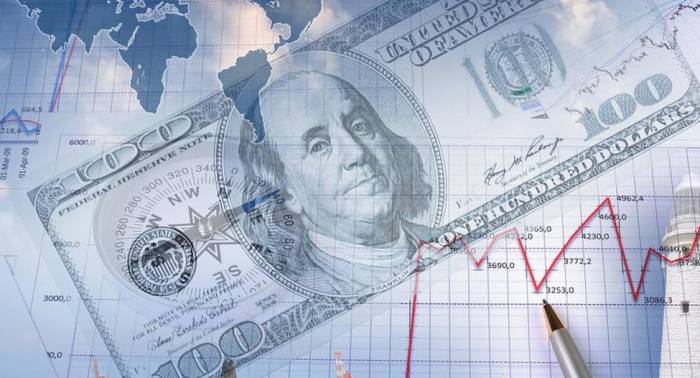The Dollar Rate Cut Drama Amidst the Data Fog, When Will the Truth Emerge?
In just three days, on September 18th, the hammer of the Federal Reserve's interest rate meeting is about to fall.
Will it be a rate cut to save the market, or will it continue to raise rates and tough it out?
Let's engage in some wild speculation.
Suppose these seemingly contradictory economic data are all true, will the Americans really make a decision that shocks the world?
The fog of data, truth is hard to discern.
The U.S. economic data is more dramatic than a Hollywood blockbuster.
Since September, five key indicators have each sung their own tune.
What are they singing about?
Job vacancies, ADP employment numbers, manufacturing PMI, each with a long face, crying out "If you don't cut rates, I can't hold on!"
But then, looking at the non-farm employment numbers and the unemployment rate, they are all smiles, with the unemployment rate hitting a new low.
Are they playing a joke on us?
The most enigmatic is the CPI, which is exactly at the delicate position of 2.5%, and the core CPI is even playing a "little rebound," making people exclaim "This script, even the screenwriter wouldn't dare to write it like this!"
Fed Chairman Powell probably has to stare at these numbers every night, with a lot of internal conflict.
Cut rates?
Raise rates?
Or stay put?
Whether to cut rates or not, the psychological warfare is escalating.
It's said that the Fed is playing a psychological war, and that's true.
The truth behind the data is actually a fierce game of policy between the U.S. internal forces regarding the dollar.
Cut rates, and they fear inflation will reignite.
Don't cut rates, and the economy can't catch its breath.
It's a dilemma that tests wisdom and courage.
But speaking of which, if these data are all true, without any watered-down content, how would the Americans choose?
The strategic considerations behind this are much more complex than the data itself.
Economic resilience and strategic game-playing.
Let's sort this out.
If the data are all true, what does it mean?
The U.S. economy really has that kind of resilience to withstand pressure.
Or it is in the transition period of pain, with mixed good and bad, but it won't fall in a short time.
Behind this is a contest between the U.S. economy's self-regulation ability and external pressure.
The strategic goal of the Americans is not just to protect the economy, but also to gain the upper hand in this global game.
Cutting rates?
That needs to be very cautious, after all, once this gap is opened, previous efforts may be wasted.

The U.S.'s staunch allies, Japan, Canada, Europe, are all cutting rates to protect the economy, some have even cut several rounds.
But the U.S.?
Steady as an old dog, unmoving.
Behind this is the U.S.'s confidence in its global economic influence, and also a certain disregard for the interests of allies.
After all, on the global strategic chessboard of the U.S., each piece has its place, but not every piece is equally important.
Cutting rates?
Risks and opportunities coexist.
If the data is true, the possibility of the dollar cutting rates is actually not very big.
Why?
Because cutting rates means giving up the suppression of inflation.
Once inflation comes back, the consequences are unimaginable.
Moreover, cutting rates will also weaken the global status of the dollar, which is not what the U.S. wants to see.
But speaking of which, cutting rates is not without benefits.
It can directly stimulate the economy, alleviate the pressure on businesses and the public, and may even seize the initiative in the global economic downturn.
This is really a dilemma!
Not cutting rates?
The determination to tough it out.
Not cutting rates means that the U.S. will continue to tough it out, using high interest rates to suppress inflation, while also showing the world the strength of its economic power.
But this approach also has a price, dissatisfaction of allies, economic pressure, challenges to global status... each one is a heavy burden.
But the Americans seem to care little about these, they value long-term strategic goals more.
In their view, as long as the dollar printing machine can still rumble, as long as their wealth can continue to grow, the current difficulties are just temporary.
The domino effect of the global economy.
Whether the dollar cuts rates or not, it affects more than just the U.S. itself.
It's like a huge rock thrown into a calm lake, triggering a chain reaction like ripples, spreading to every remote corner of the world.
If the dollar cuts rates, global capital may flow back to the U.S., and the pressure on emerging markets will be further increased.
If it doesn't cut rates, the global economy may continue to be sluggish, and the road to recovery is far away.
A new chapter under the Sino-American game.
Behind this big play of dollar rate cuts, there is also the game between China and the U.S. Every move of the Americans will affect the global economic pattern and will directly affect China's external environment.
The game between China and the U.S. is no longer limited to trade, technology and other fields, but has penetrated into finance, currency and other deeper levels.
Will you be ready when the suspense of the dollar rate cut is revealed?
In fact, we all know that whether the dollar cuts rates or not, it ultimately depends on how the big guys at the Fed decide.
But no matter what the result is, this big play is worth our close attention.
Because it's not only about the fate of the dollar, but also about the future of the global economy.
What do you think about this suspense of the dollar rate cut?
Do you believe in the truth behind the data, or do you think it's just a psychological game played by the Americans?
post your comment